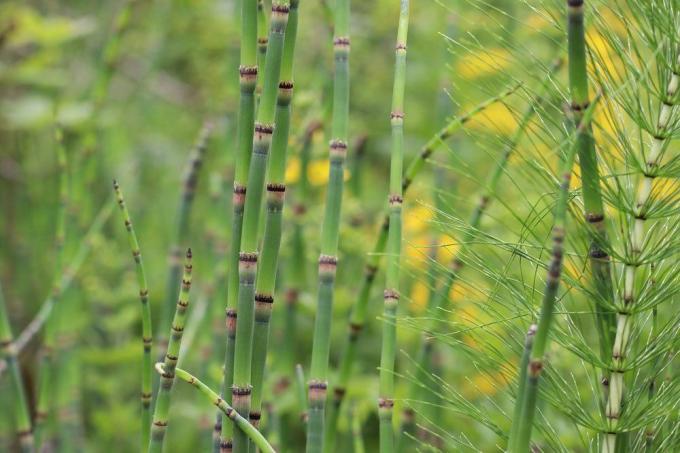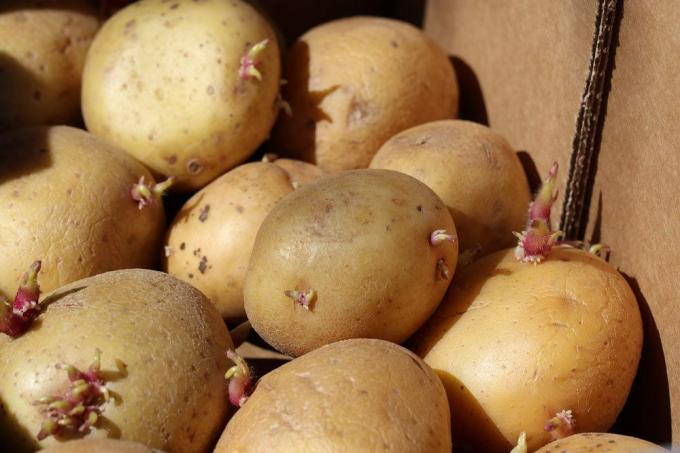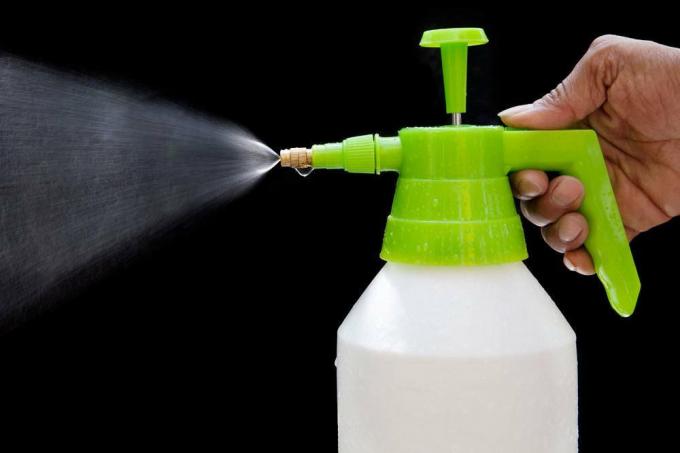
table of contents
- Horsetail broth
- effect
- use
- Against pests
- Correct application
There is the right chemical against almost every plant disease and most pests. At the same time, nature offers numerous beneficial and environmentally friendly ways to take action against such harmful organisms. This includes, for example, the preparation and use of plant broths. In this regard, hobby gardeners particularly appreciate the field horsetail, in addition to the nettle. Thanks to the natural active ingredients and ingredients, horsetail broth can be used very effectively to strengthen plants and thus prevent fungal diseases and pests.
Horsetail broth
Make horsetail broth
Making a horsetail broth is straightforward. The field horsetail, which is native to this country, is used, which is a real all-rounder when it comes to natural plant protection. Horsetail is not so common in gardens, so the herbs needed for a broth must be found are mostly collected in the wild, although they are also offered in the trade in dried form will. Dried herbs are also suitable for making a corresponding vegetable broth.
- August is the best time to collect fresh horsetail
- The active ingredient content in the plants is then highest
- Also ideal for drying the herb, the summer is ideal
- Only the green, above-ground shoots are collected
- about one kilogram of fresh herb and 10 liters of water are required
- of dried cabbage approx. 200 g is sufficient
- now cut the collected herbs into small pieces
- Put the crushed plant material in the water
- preferably use rainwater
- Bring water to a boil and cook intensely for 60 minutes
- cover the pot during the hour-long cooking process
- Cover is designed to prevent too much water from evaporating
- then let the boiled stock steep for 24 hours
- In the next step, pour the mixture through a sieve or filter
- Dispose of plant residues on the compost
- what remains is a brownish brew in concentrated form
- Now dilute the brew as required and apply it to the plants

Should the horsetail broth be used to control pests such. B. If aphids or spider mites are used, the cooking time is reduced to 12 hours. The addition of 0.3% soft soap can increase the effect of the broth, especially against these two pests, if necessary.
Field horsetail extract
If the effort to make or prepare a broth from fresh or dried herbs is too great for you, you have it Possibility of getting ready-made horsetail extract in stores and according to the instructions of the respective manufacturer apply. When preparing a brew of fresh herbs, you should know that it will only keep for a limited time. If it stands longer, it will ferment and it will turn sour. In this case it has to be used like liquid manure and, depending on the intended use, be diluted more.
Tip: When chopping the plants, it is advisable not to use the best knife or one that can be sharpened again without problems. Field horsetail contains a lot of silica, which can dull knives.
effect
Effect of horsetail brew
The horsetail (Equisetum arvense) is on the one hand a very stubborn and difficult to control weed that other plants can displace. However, it is not only valued by organic gardeners for its excellent effectiveness. And if you can't get rid of it completely, you should come to terms with it and make use of its positive properties. What makes field horsetail so valuable for plant health are its ingredients.
ingredients
In addition to saponins, flavones, trace elements and traces of alkaloids and rare dicarboxylic acids, there are above all the mineral components, especially the contained silica, which are responsible for the good effectiveness are. Horsetail is one of the plants with the highest proportion of silica. This amounts to about 5-7.7%, of which 10% are present in the plant in water-soluble form. However, as the plants become more lignified, the proportion of silica decreases, which makes it all the more important to ensure that they are collected at the right time. You can literally feel the high proportion of silica when you touch the plants, because it is responsible for the slightly rough surface.

use
Possible uses of this natural plant protection product
As already mentioned, horsetail broth is mainly used preventively to strengthen plants. The silicic acid it contains is absorbed through the leaves or roots of treated plants, depending on whether it is sprayed or watered. This strengthens the cell structure of the plants in question and improves their resistance to harmful pathogens. It is therefore increasingly difficult for fungi and pests to penetrate and damage the plants.
Troubleshooting
Problems with fungal and animal pathogens can occur in very different crops. The most common causes of an infestation are unfavorable site conditions or mistakes in maintenance. Perennials and roses can be affected as well as fruit trees and vegetables. Fungal diseases that can be prevented with a brew of field horsetail are leaf spot disease, herbaceous and Brown rot, curl disease, powdery mildew and downy mildew, gray mold, apple scab, Monilia disease, rust fungi as well Star soot.
With fruit and vegetables
- Spraying of potatoes and tomatoes against the dreaded late blight and brown rot
- both vegetables are particularly often affected by this disease
- Late blight, by far the most common fungal disease on tomatoes
- Treat woody plants such as peach, apricot and nectarine as a preventive measure against curl disease
- Horsetail broth has a good effect against powdery mildew, a fair weather fungus
- Powdery mildew can occur on both useful and ornamental plants
- For example, tomatoes, cucumbers and various types of lettuce are at risk
- Field horsetail also improves the resilience of pome and stone fruit
- Both types of fruit are susceptible to rust fungus and Monilia disease (peak drought)
- Peak drought, one of the most persistent fungal diseases of pome and stone fruit

Of roses
This field horsetail brew is also very useful for roses, which are relatively often afflicted by rose rust and star soot. By the way, sooty is the most common rose disease. Typical of an infestation are the black-brown spots on the leaves, which vary in size and spread out in a star shape. Because of these spots, black spot is often referred to as black spot disease.
In order to prevent disease, the leaves should be treated with horsetail broth in the form of injections as soon as the leaves emerge. Regular and early sprayings, once a week, can harden the roses. This prevents fungal pathogens from gaining a foothold on the plants and infecting them.
Tip: The location of the rose, the nature of the soil and the right care also play a decisive role so that the use of these self-made plant broths can be successful.

Against pests
When it comes to pest control, freshly made horsetail broth does not act directly on pests. In the case of these animal pests, too, it can usually only be used preventively, but not to combat them. Horsetail can be helpful in repelling aphids, spider mites, the red spider, the leek moth and mites.
Correct application
Using horsetail broth is simple and straightforward. It is finely atomized, sprayed directly onto the entire plant population and applied to the ground, i.e. the root area. So that it can develop its full effect, it is diluted in a ratio of 1: 3 or 1: 5 (1 part broth / 5 parts water). In the case of endangered plants, the treatment should start as soon as the leaves shoot and this should be repeated at 14-day intervals.

plants
The broth can be used on all green parts of the plant until autumn. The plants should be treated again after each rain. In the event of an acute risk of fungal attack or the outbreak of a corresponding disease, it is advisable to spray the affected plants intensively with this brew for three consecutive days.
Growing fruit and vegetables
For use in fruit and vegetable growing, it is recommended to apply three sprayings in winter between the end of November and March, preferably during a short thaw period. Where lime coatings are unfavorable, horsetail broth can also be used for fruit trees against frost cracks, moss and lichen formation and animal damage as well as against fungal and pest infestation protection. To do this, an existing recipe for painting trees can be made up proportionally with horsetail brew or complement this with it.
Tip: The application of horsetail brew after years of persistently damp weather is particularly useful and recommended. Then the risk of the outbreak of the disease is particularly high.
